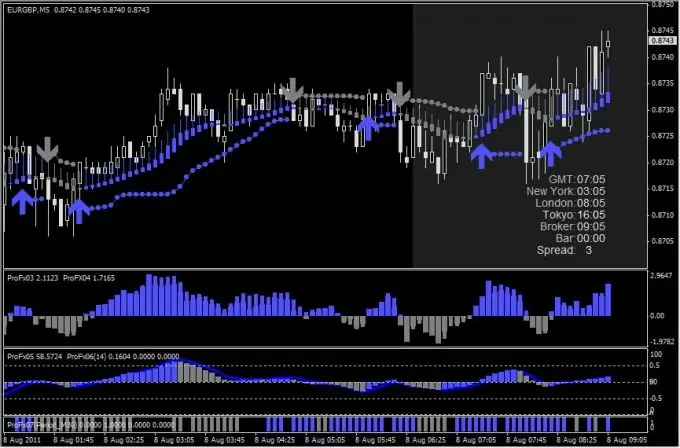Indicators are used in the MetaTrader terminal as an auxiliary tool for assessing changes in the main price chart. In addition, they can display information about the state of the current account and open trades, upcoming financial events, opening and closing times of trading sessions, etc. Most often, indicators not included in the basic distribution kit of the terminal are distributed via the Internet and require certain manipulations before use.

Necessary
MetaTrader terminal
Instructions
Step 1
Place the indicator file in the indicators folder - look for it in the experts folder of the directory where the terminal is installed. Usually MetaTrader is installed in the Program Files directory of the system disk and the name of its folder begins with the name of the broker - for example, Alpari MetaTrader.
Step 2
Compile the indicator if needed. A ready-to-use (already compiled) indicator file has the ex4 (or ex5) extension, but often only a file with the mq4 (or mq5) extension is distributed over the Internet. This extension has a source code file that cannot be used without compilation. The terminal automatically compiles all mq4 files at startup, so if it is possible to restart it, then do it.
Step 3
If you cannot turn off the terminal, double-click the source code file - this will open it in MetaEditor. To compile the code loaded into the editor, press the F5 key or click the Compile button.
Step 4
Go to the MetaTrader terminal - in the editor this can be done by pressing the F5 key. Open the chart where you want to place the indicator.
Step 5
Expand the "Custom Indicators" section in the "Navigator" pane - it is located on the left side of the terminal window. Find in the list of indicators the one that should be attached to the chart and drag it onto the chart with the mouse. Instead of dragging and dropping, you can double-click the indicator name.
Step 6
Change the indicator settings in the Custom Indicator window that MetaTrader will show before attaching the indicator to the chart. On the "General" tab, check the corresponding checkboxes if the indicator uses external files in its work. On the "Colors" tab, you can set the width, line type and their color shades. On the "Display" tab, you can turn off the display of the indicator on the chart for some of the timeframes. The "Input parameters" tab contains the main settings of the indicator.
Step 7
Click the "OK" button in the Custom Indicator window and the indicator will be displayed on the chart. Sometimes it takes several seconds or even tens of seconds for the indicator to prepare the displayed information in advance.






